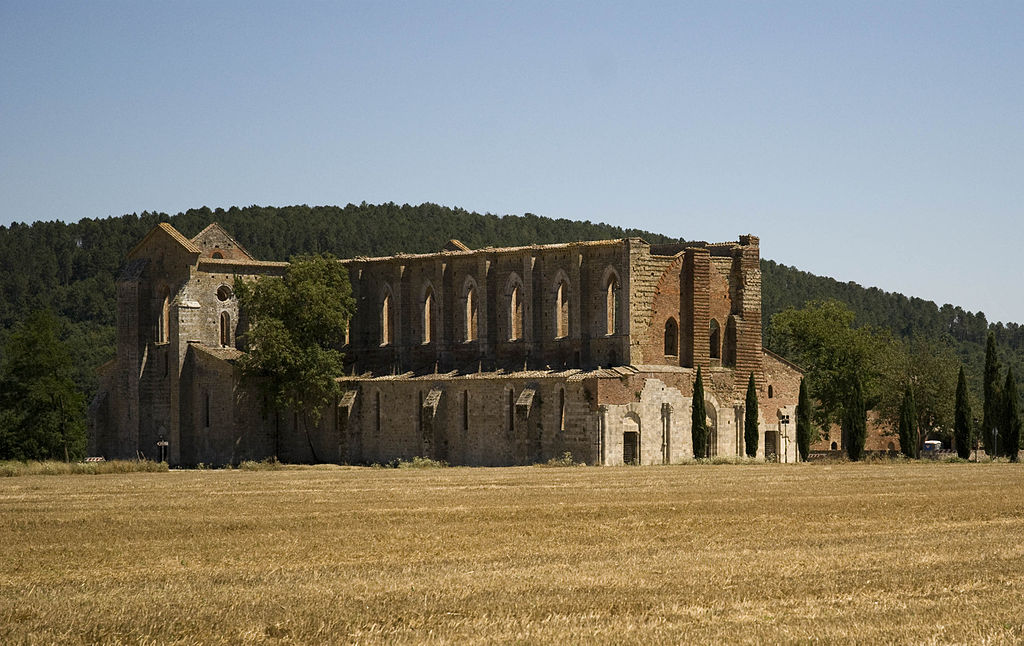This past Friday, I was lucky enough to visit the Ringling Museum, a complex built by the circus mogul John Ringling and his wife, Mabel. Besides housing a stunning collection of Renaissance, Baroque, and Neoclassical art, the surrounding grounds include a rose garden, circus museum, and Cà d'Zan, the Mediterranean Revival mansion that overlooks Sarasota Bay and was designed by Dwight James Baum. Cà d'Zan (literally “House of John”) is based on the Doge’s Palace in Venice, Italy, and has pink stucco, quatrefoils, pointed arches, and stained glass. The rustic style, Mediterranean Revival, developed during the 1920s and was intended to bring European architecture, ideals, and the classical ambiance to Florida. A cheaper option than actually sailing to Europe, Florida became a hotspot destination. Cà d'Zan has a stunning view of Sarasota Bay, and the day that I visited, the water was gleaming in the hot sun and teeming with dolphin activity. The grounds also include the graves of John and Mable in a small alcove; the tranquil mood and lush vegetation in the courtyard reminded me of the Baroque grottos in France. The rose garden is also worth noting; with some rose bushes from the 1800s still growing and intact, I felt like I was walking in a time capsule of the Florida before industrialization, commercialization, and tourism. With names like “Innocence,” “Popcorn,” and “Laughter,” the circular garden was an enchanting and charming space complete with a wrought iron canopy in the middle.
The Ringling Museum is famous for its numerous Rubens, Rembrandt’s, El Greco’s, and other famous (and obscure) Baroque painters. The first gallery is actually five large Rubens that were intended to be cartoons for woven tapestries. Commissioned by Infanta Clara Eugenia, this “Triumph of the Eucharist” cycle glorified the Catholic church and sought to counteract the powerful Protestant movement of the 1600s (the Counter Reformation). Besides being monumental, impressive, and breath-taking, these large canvases are the archetype of a Baroque painting: swirling drapery, diagonal compositions, split second imagery, and rich jewel tones. Rubens also liked to paint large, fleshy subjects with ample mass. One of my favorite paintings in the elaborate cycle is "Abraham and Melchizedeck", in which a priest,Melchizedeck, offers the Eucharist to Abraham (who has just returned from battle). Their eyes lock, indicating their spiritual understanding while other characters lurk in the background. The contrast of dark war imagery and the light colors of the priests’ side are particularly striking. Moving on from the Rubens gallery, other rooms contain Dutch still lifes, Annunciations, Arcimboldo’s, Canaletto’s, and even a portrait of Philip IV by the Spanish painter Diego Velázquez (my all time favorite artist). John Ringling was an avid art collector and represented the "business" side of the circus.
The best part of the museum in my opinion is the courtyard between the two wings of the art galleries. Completely open to the air and containing copies of Greek and roman sculptures, this space is calming and simply beautiful on a clear, breezy day (as it was when I went). Sculptures include the Dying Gaul (Hellenistic), The Scraper (Late Classical), Laocoon and Sons (Hellenistic), Romulus and Remus (Etruscan), the Tiber and Nile River Gods (Roman), and most prominently, a reproduction of David (High Renaissance). Viewing these bronze statues is like stepping into a classical past that Lysippos, Brunelleschi, or Phidias would have strolled in. The statue of David in the center back of the garden towers over everything else, imposing its presence and intense stare on every viewer. Mannerist fountains based on those found in Rome, and large terracotta amphorae (large vases used to store olive oil or wine) litter the courtyard as well. Ringing the space is a pink loggia, an open walkway with balustrades and composite columns of different sizes/origins. This open pathway contains smaller bronze statues, blind marble encrusted doors, and antique lamps on the ceiling. Also, geometric patterns in the front of the sprawling classical oasis refer back to the garden of Versailles built under the command of Louis XIV in France.
Picasa Web Album here:
| Ringling Museum 2014 |





.jpeg)
